- No legs
- Brown-grey colour
- Cylindrical shape
- Mandibles at one end
Leatherjacket Control in Cardiff & South Wales
For leatherjackets, a beautiful lawn can make a very inviting home – unfortunately for homeowners, they don’t make for very good tenants! If you’ve found yourself with leatherjackets in your lawn, our leatherjacket control services can help you get the problem under control.
What are leatherjackets?
Leatherjackets are the larvae of the European crane fly (also known as daddy-long-legs). In the late summer (usually end of July and August, depending on soil temperature) craneflies lay their eggs in the ground – they can lay up to 300 eggs at a time! The maggots that emerge from those eggs are what’s known as leatherjackets. Once the leatherjackets have hatched, they will start to eat the grass stem and roots just below the surface of the lawn.
When should you treat leatherjackets in your lawn?
Leatherjackets tend to hatch during the autumn, so visible damage from leatherjackets in your lawn may appear in November or December, depending on the scale of the problem. The larvae can continue to grow and cause problems all the way through winter and into early spring if left unchecked.
The optimal treatment time for leatherjackets is between late September and October. It is best to treat leatherjackets when they are still in the larvae stage, before they take wing and have time to do much damage to your lawn. If leatherjackets are left to thrive until the spring when they are fully grown, they will do significantly more damage to your lawn than they do in their early days.
The optimal treatment time for leatherjackets is between late September and October. It is best to treat leatherjackets when they are still in the larvae stage, before they take wing and have time to do much damage to your lawn. If leatherjackets are left to thrive until the spring when they are fully grown, they will do significantly more damage to your lawn than they do in their early days.
What happens if you don’t treat leatherjackets in your lawn?
Without leatherjacket control measures, these grubby soil-dwellers can strip whole lawns, turning the grass brown as they destroy the roots. The resulting bare patches can then be colonised by moss and weeds, causing further issues for your lawn.
You should also be aware that birds and mammals cause extra damage as they dig for leatherjackets in your lawn. They will ravage the ground as they hunt for these gourmet grubs, so we highly recommend contacting us about our leatherjacket treatments at the first sign of their emergence! Keep your eyes peeled between August and October when these pests are most prevalent.

You should also be aware that birds and mammals cause extra damage as they dig for leatherjackets in your lawn. They will ravage the ground as they hunt for these gourmet grubs, so we highly recommend contacting us about our leatherjacket treatments at the first sign of their emergence! Keep your eyes peeled between August and October when these pests are most prevalent.

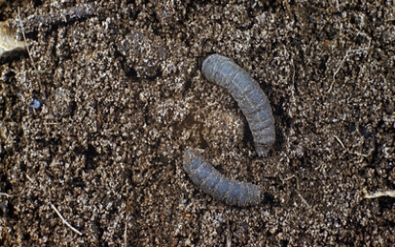
How to identify leatherjackets
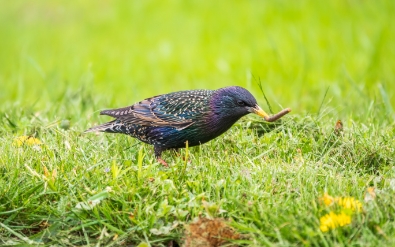
Signs of Leatherjackets in Your Lawn
- Grass turning yellow despite rainfall
- Bare patches near shady areas
- Birds pecking at your lawn and trying to eat the larvae
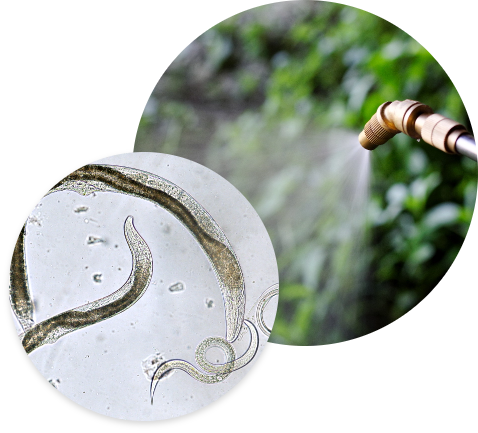
How to Get Rid of Leatherjackets
If faced with an infestation of leatherjackets, professional lawn treatment is a wise choice. Lawn & Weed Expert can be reached at 0800 111 4958 – our specialist services are available in Cardiff, Newport, Swansea, and across South Wales.
There are several ways to treat leatherjackets:
At present, there are no leatherjacket treatment chemicals that are deemed safe for use by amateurs. If you have a leatherjacket infestation in your lawn, the best route to take is to enlist professional leatherjacket control services like those provided by Lawn and Weed Expert.
There are several ways to treat leatherjackets:
- Here at Lawn & Weed Expert, we use a unique treatment that isn’t available anywhere else to deal with leatherjackets - this is by far the best way to treat an infestation.
- An alternative leatherjacket treatment some turn to when faced with a leatherjacket infestation is nematodes. Nematodes are small, worm-like insects that can naturally dispose of leatherjackets. Nematodes are the only leatherjacket treatment readily available to the general public - however, we don’t recommend this method of leatherjacket treatment as it has a low success rate, and is only effective during dry weather spells.
At present, there are no leatherjacket treatment chemicals that are deemed safe for use by amateurs. If you have a leatherjacket infestation in your lawn, the best route to take is to enlist professional leatherjacket control services like those provided by Lawn and Weed Expert.
Repairing Damage Caused by Leatherjackets
When it comes to lawn damage done by leatherjackets, the extent of the damage can be serious if they aren’t dealt with swiftly and effectively. In fact, if leatherjackets have caused havoc in your garden, there is a chance that your grass may not grow back even once the infestation is under control.
Depending on the scale of the leatherjacket damage, we may recommend:
Depending on the scale of the leatherjacket damage, we may recommend:
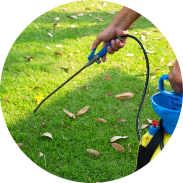 1
1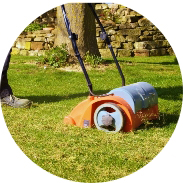 2
2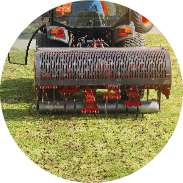 3
3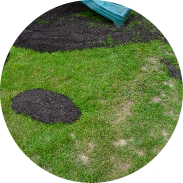 4
4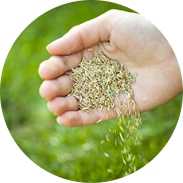 5
5